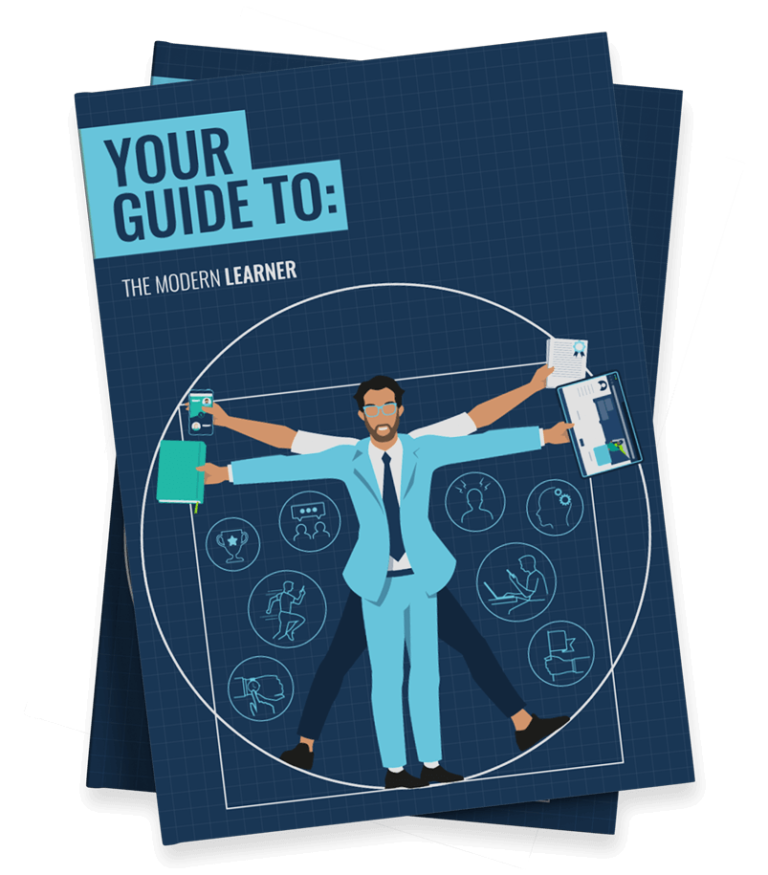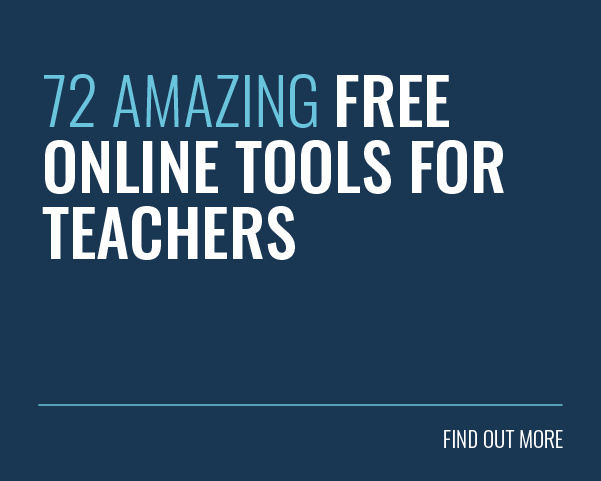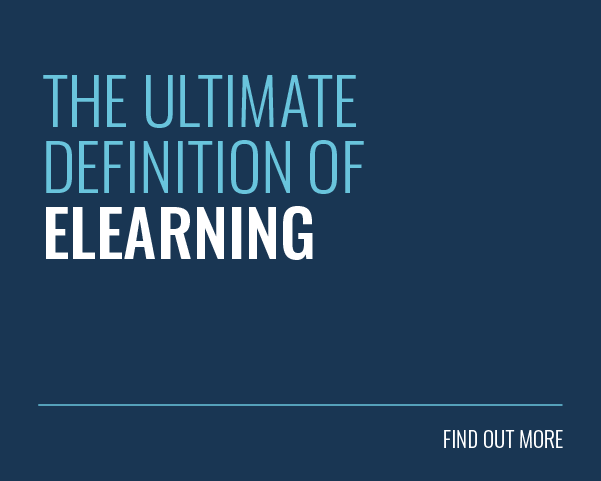 Creating effective corporate training programmes can sometimes feel like herding cats. After all, each learner has their own unique skill sets, needs, preferences and schedules.
Creating effective corporate training programmes can sometimes feel like herding cats. After all, each learner has their own unique skill sets, needs, preferences and schedules.
And even after you have crafted a training initiative that meets these needs, you are likely to hear that difficult (and often dreaded) question from your learners: ‘what’s in it for me?’ (WIIFM).
Answering this question is essential to keep your learners engaged. After all, it guides nearly every decision we make, from the products we buy, to whether to bother with the latest employee training!
You may be asking: why should I read this article? What’s in it for me? Well, we’ll be dishing out best practice advice and sharing five ways to help you answer the WIIFM question successfully.
Ready? Bring it on!
‘What’s In It For Me’ (WIIFM)
What’s in it for me, or WIIFM for short, is a well-known tactic in the marketing and advertising industry. Essentially, WIIFM describes what the consumer or audience will get out of using or buying a product or service.
Nowadays, it’s pretty common for consumers to chew over purchase decisions. They’re also likely to deliberate over how they spend their time. They want to know how doing so will help their specific characteristics and needs.
As such, answering WIIFM helps you to create better marketing copy and sales materials. After all, you’ll be able to highlight how your offering will satisfy your target audience.
As a result, they will become more interested, involved and engaged if you address their needs successfully.
WIIFM in Employee Training
While WIIFM is commonly used in the marketing world, its use expands to other industries. In fact, it can be an excellent motivator in employee training and online learning.
Your learners, regardless of their age, position, education level or enthusiasm, are likely to ponder the reasons or necessity of their training every now and then.
After all, according to the Harvard Business Review, we’re typically only able to set aside 5 minutes per day for learning and development. We need to make sure that we’re using this time wisely.
As such, you need to be prepared to answer the big question, ‘what’s in it for me?’.
Creating a training programme with WIIFM in mind is the only way to ensure your audience is fully committed to their training. After all, your employees are more likely to be engaged in their activities if they understand how it benefits them.
Even the most boring compliance-focused content will fuel a new sense of purpose if your employees comprehend the value of their efforts.
But how can you convey this to your learners?
5 Ways To Answer ‘What’s In It For Me?’ (WIIFM)
Answering this question at the start and throughout your training course or unit will help you to keep your learners engaged and interested in their training.
1. Highlight the Benefits

Your employees should be able to draw a direct line between training and success. And to do so, you need to make it explicitly clear how learning new things will benefit them.
These benefits can come in various forms. For instance, it could be simply being able to do your job better. Or perhaps extra training will make stressful tasks easier. Maybe it is even their golden ticket to that dream promotion or salary increase.
There are various techniques you can use to express the benefits of your training programme. You could, for example, use your personal experiences to describe how the content has helped to drive your success.
Similarly, you should use resources or quote individuals your learners recognise as experts within their industry. Expert opinion is often successful in highlighting the importance of specific knowledge.
Sharing relevant examples is also an excellent way to ensure your learners understand how this course content fits them and their unique learning needs. You can do this by presenting some interesting case studies from your industry.
And, of course, let’s not forget the power of facts and stats! Current and accurate statistics help you to establish relevance and credibility. For example, if your audience knows that 90% of your previous learners advanced 3x faster in their careers, you are sure to make an impact.
Whatever the benefits are, pack your training full of Epic Meaning by communicating how it aids both your employee’s personal goals and the wider company mission.
This way they can immediately see how their personal development benefits them, the team and the whole organisation.
Remember: what’s valuable to you, might not be so valuable to your team. Whilst they may be driven (to some extent) by helping your organisation to succeed, it’s best to frame things in terms of how that benefits them.
Take the micro, not the macro view. Put yourself in their shoes and communicate accordingly.
2. Offer Rewards and Recognise Performance
Rewards and recognition help you to successfully communicate the value of your training. After all, most of us are more engaged when there is a tasty offer on the table.
These rewards could be tangible or intangible. You could, for instance, offer badges or certificates your employees can showcase on social media.
Or perhaps you can give out coffee shop vouchers or an extra day off for learners with the highest assessment scores throughout the programme. Giving them recognition within your internal communication channels also helps to fuel engagement.
Whatever the benefits are, you need to communicate them effectively prior to your training programme. Similarly, you need to keep things consistent so that your learners know what to expect as a result of their training efforts.
One way to do this is with a gamified learning solution. Features like Leaderboards showcase top performers. You could even add an extra element of reward and recognition by awarding virtual XP and Badges for the completion of each Level!
3. Engage with Online Learning
WIIFM is not necessarily just about what we get out of doing something. Instead, it can be about how something makes us feel while doing it.
We are drawn to completing tasks that make us feel good and get our reward receptors buzzing. On the other hand, we avoid what makes us feel bad. This is the basis of behavioral learning theory.
It’s also a useful ideology when it comes to crafting employee training that expresses WIIFM successfully. After all, most people would much rather fight dragons or shoot bubbles than complete some traditional (and often boring) training content.
Why? Because we love to have fun and compete for that all-time high score. Pages full of text and stock images can make even the most devoted students yawn. It only makes sense that gamification has become so popular now that we understand its power.

As such, to engage your learners, you need to inject your training with that feel-good factor! Game mechanics help you to give instant real-time rewards to your learners as they progress through your training programme.
You could also up the ante by building your online training around a meaningful game template or narrative. These are excellent ways to bring your content to life. Moreover, your learners will stay intrigued and inspired, all while making the information easier to remember and share.
Similarly, simulations, role plays and practice exercises make training relevant while keeping things engaging. After all, your learners become active participants in their learning process.
By making sure your training is as engaging as it can be, your employees might even notice that they are having fun while completing their learning units!
4. Provide a Platform for Social Success
Having fun is all well and good. But do you know what’s even better? Having fun together and sharing our success!
Here at Growth Engineering, we are strong advocates for social learning. We have seen amazing results by putting social learning at the heart of our clients’ learning culture.
As a result, our solutions come packed with social learning features. These features enable learners to awaken their inner social butterflies, while testing their knowledge and sharing their expertise.
These tools make it possible for your learners to gain recognition as an expert in your organisation. After all, contributing to Clubs or sharing knowledge on the Social Feed helps their peers to see them as a relevant source of knowledge.
And as we know by now, humans love a bit of recognition. In fact, over 91% of HR professionals believe that recognition reduces employee turnover. Similarly, lacking recognition contributes to 44% of employees changing jobs.
As such, you should encourage your employees to get talking on your learning management system (LMS). Your learners should use your social streams to celebrate their new skills and show off their training rewards.
You can even raise the bar and invite your learners to compete for the top spot on your LMS’s Leaderboard. This is a chance for your learners to see the benefit of accumulating all that XP.
5. Create an Effective Learning Culture

Don’t wait until it’s time to roll-out some all-important compulsory training before you start communicating the benefits of your development initiative. Instead, embed the values of training into a strong company learning culture.
Make continuous employee development a company-wide value that everyone understands! You can achieve this by putting learning and development awareness at the heart of your onboarding programme.
This way, you can ensure new starters understand the value of training from day one and encourage real behaviour change. For example, you should offer new starters engaging online training and learning apps that help them settle in and learn the ropes!
Make sure clear learning objectives and expectations run throughout the employee experience. This includes everything from inductions and one-to-ones, to promotions and exit interviews.
After all, tying the learning culture into every stage of the employee life cycle will make training a normal and valuable part of every day.
Common WIIFM Issue: Balancing Intrinsic and Extrinsic Motivators
Historically, WIIFM has been used in marketing and advertising. This has given it a transactional reputation.
As a result, organisations’ answers to ‘what’s in it for me’ are often based on oversimplified assumptions about human behaviour and motivation. For instance, it’s easy to come to the conclusion that investors want to make money and donors want recognition.
While these assumptions are typically true, there is much more to WIIFM than just tangible elements. That’s why L&D leaders should answer WIIFM by focusing on both extrinsic and intrinsic motivators.
After all, the impact of extrinsic rewards usually diminishes over time. Intrinsic rewards, on the other hand, come from within. That makes them essential to sustaining behaviour change and forming habits.
While most learners want to see improved skills leading to a higher salary, better position or other tangible benefits, that’s not the be all and end all. Encouraging intrinsic rewards ensures your learners always have a clear answer to the WIIFM question.
You can use, for example, surveys or interviews to discover what your learners value. These results, linked with a proper training needs analysis, can help you to lead to training programmes with real shape and structure and clear benefits.
WIIFM Best Practices for eLearning
1. Keep Your Target Audience in Mind
When you are trying to sell something, whether it’s a product or service, you create your messaging with your target audience in mind. Your fancy new training programme is no exception.
WIIFM requires a deep understanding of your audience. This understanding needs to be based on effective assessments and data instead of simple categorical assumptions.
As such, you need to focus your communication and the training course as a whole on their specific needs. After all, this is the only way to ensure both your extrinsic and intrinsic motivations are relevant to your learners.
2. Focus on Your Messaging

In order to express WIIFM effectively, you need to focus on your messaging and the language you use.
Simply addressing your learners by changing ‘we’ in your communication to ‘you’ can have a big impact. Let’s compare a simple marketing message to see the difference.
For example, “we provide the fastest service” focuses on the benefits an organisation offers. By changing it to “by switching today, you can get the fastest service available”, you address the consumer directly whilst outlining a clear benefit.
In addition, you need to build trust with your audience to ensure your messaging is credible and relevant. If it’s not, your learners won’t find the WIIFM believable.
To do so, you could include learner success stories, reviews and testimonials in your course description and overall communication. Similarly, if you are using award-winning learning technology, make sure your learners know that.
3. Segment Your Learner Groups
Segmenting helps you to ensure each learner group finds WIIFM from your training. After all, you can approach each group with different training content and messaging.
This ensures that each learner receives the most relevant information that matches their skill levels. Learning about something that’s either too easy, too complex or fully irrelevant to your role or needs, is a sure-fire way to drop those engagement levels.
As such, by segmenting your training programme, you can ensure your content speaks directly to the needs of your specific audiences. You can easily do this with your learning technology solution.
For instance, learning pathways allow you to push and pull specific content units or courses. These eLearning tools also enable personalised messaging on individual, group or organisation-wide levels.
4. Add Personalisation
The more customised your training programme and content is, the more likely your learners will recognise the advantages of completing it. After all, personalisation helps you to create more targeted and relevant messaging.
This level of personalisation should be covered in your learning technology solution, content and communication. For example, a white label LMS means that your system can reflect your brand in its look and feel.

But what makes personalisation so great for successfully answering WIIFM? Personalised training generates Epic Meaning. Epic Meaning is the sense of purpose that fuels our passion for a cause.
Ultimately, personalised training and Epic Meaning help you to showcase to each employee that their personal efforts are essential to achieve your company’s mission. As such, it’s a way of making them feel important and giving their efforts meaning and recognition.
5. Involve Your Learners in the Conversation
Behaviour change is the ultimate goal of any training programme. After all, you want your learners to be able to apply their new skills to various situations and contexts successfully.
As such, you need to put yourself in their shoes and get into a learner-centric mindset. Thinking from the learner’s perspective helps you to involve them in the conversation better.
The more you include your learners and grant them influence, the more invested they will become. This, of course, helps them to recognise WIIFM easier and engage with the training programme as intended.
It also helps you to understand what makes your learners tick. As a result, you can fine-tune both your training content and your benefit statements at the same time!
Final Words
Answering the WIIFM question can be tricky. Luckily, these five tactics can help to illuminate the benefits of your training. After all, you are giving your learners plenty of reasons to invest in your training programme.
Your learners will soon see that learning is key to success. And hopefully, they will have some fun along the way. That, ultimately, leads to a more engaged and productive workforce. A win-win situation if you ask us!
Are you struggling to understand your learners? Our guidebook, ‘Your Guide To: The Modern Learner’, will give you all the insights and tools you need!










